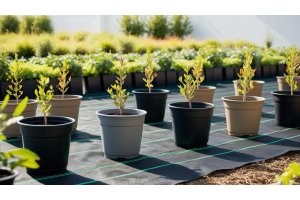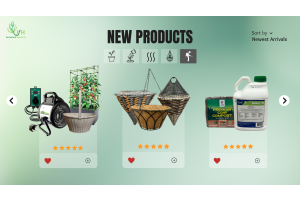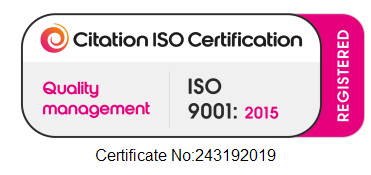How to Plan for Spring While It’s Still Winter: A Proactive Grower’s Guide

Winter is here, and for many commercial growers, that means a quieter pace. The rush of the planting season is still months away, and you’ve earned a bit of a breather. But, this is exactly the time to start planning for the busy season ahead. It’s a delicate balance, staying focused on current operations while making sure that when the warm weather hits, you’re ready to hit the ground running. Here’s how you can stay ahead of the game during the colder months and ensure a smooth, successful spring.
1. Review Last Year’s Performance – Dig Into the Data
Before you start looking forward, it’s essential to look back. Sure, it’s tempting to push last season out of your mind as you head into the new year, but this time of year gives you a rare chance to really dissect the numbers, the yields, and everything that went right (or wrong).
- Analyze your sales data: Pull up your records of what sold, when it sold, and how much you sold. Look for patterns. Did certain plants sell more or less than expected? This can help inform what to grow next season and how much you should plant.
- Assess plant performance: Go through your yield reports. Were there any surprises in terms of pest problems, diseases, or lower-than-expected harvests? Take notes on what affected your yields and think through ways to improve these aspects for the coming year.
- Talk to your buyers: Winter is a great time to reconnect with your buyers. Have demand trends changed since last spring? Are there new plants they’re interested in, or changes in the quantities they need? These insights will guide your plan and help you decide where to focus your efforts.
This deep dive not only uncovers areas for improvement but also reveals opportunities you may have missed. It might be the smallest tweak to your cultivation method or a new plant variety that could yield higher profits.
2. Refine Your Crop Plan – Think Beyond Planting
Now that you have a clearer picture of last year’s performance, it’s time to tweak your crop plan for the spring. This isn’t just about choosing which crops to plant. It’s about ensuring that your crop rotation, spacing, and planting schedules all align with your goals and available resources. How?
Look at your greenhouse capacity, field space, and production schedules to ensure maximum efficiency. Do you have enough room for the crops that perform well in spring? Have you accounted for staggered harvests to meet market demand throughout the season?
Consider the varieties you're growing and if they’re still aligned with your customer base. Will consumers still demand those tried-and-true favourites, or is there a rising trend you can capitalise on? Perhaps you’re already seeing more interest in certain varieties or new crops that could fill a niche market. A proactive approach now can help you secure your spot in a growing market segment, whether that’s an organic certification, unique colour varieties, or exotic plants.
By planning early, you’ll be ahead of competitors who wait until spring to make decisions. A well-thought-out crop plan sets you up to move quickly once the growing season begins.
3. Evaluate Equipment and Infrastructure Needs – Prevent Downtime
When it comes to commercial growing, there’s no such thing as too much preparation. Now is the time to inspect and maintain all your equipment and infrastructure. Are your irrigation systems ready for the spring rush? Is your greenhouse or storage space in good shape, and do you need to invest in repairs or upgrades before the season?
If you haven’t already, start reviewing your inventory of seeds, fertilisers, soil amendments, and other inputs. Ensure you’re ordering early enough to avoid seasonal shortages. Many suppliers offer early-bird discounts, so it’s worth locking in prices before they spike.
4. Prepare for Labour Needs – Get Ahead on Staffing
Spring can be an incredibly busy time for growers, and having a solid staffing plan in place is essential. Use the winter months to plan out your labour needs – not just for planting, but for all the tasks that go into getting plants to market. Will you need additional help in the field during planting season? Do you need more people to manage shipping and delivery as you ramp up production?
Winter is the perfect time to refine your recruitment strategy and start looking for seasonal workers if you haven’t already. Advertise early to get the best candidates, and consider offering training sessions during the winter to ensure that when your staff comes on board in the spring, they’re ready to jump right in without needing a learning curve. If you have returning staff, reach out now to confirm their availability for the upcoming season.
If you’re managing an in-house team, take this time to provide any necessary training. Workers can forget things over the off-season, so why not take advantage of the winter months to offer refresher courses or safety training? Even seasoned workers can benefit from a quick recap on efficient practices or new systems you’re planning to implement. A well-trained team makes a big difference when it comes to ensuring spring’s smooth start.
5.Preempt Pests and Disease Issues – Stay One Step Ahead
Pests and diseases don’t take the winter off, and neither should your pest management strategies. Consider applying fungicides to plants that are prone to pests or diseases. Make sure your greenhouse and field areas are free of leftover plant debris or organic matter where pests may hide during the winter months. Preventive treatments and strategies now will save you from reactive, expensive treatments once the warmer weather hits.
Consider researching and incorporating more integrated pest management strategies, which can be more sustainable and cost-effective in the long run. Winter is a great time to research and experiment with new technologies or partnerships that can help you handle pests more efficiently.
6. Logistics and Distribution – Plan for Smooth Sailing
The logistics of getting your product to market are just as important as growing it. Early planning ensures that by the time your plants are ready, you won’t be scrambling to secure transport, packing materials, or delivery schedules.
Get in touch with your wholesalers or retail partners to understand their needs for spring. Do they anticipate a larger order this year? Are there specific dates they’ll need deliveries? This can help you plan your harvest schedules and prioritize what to grow based on demand.
Spring is often the busiest time of year, and having a solid distribution plan ensures that your plants arrive fresh and on time. Consider working with your distribution partners to iron out schedules, and don’t wait until the last minute to secure transportation options.
These small logistics steps can mean the difference between a timely, profitable season and unnecessary delays or added expenses.
While it might feel like the quiet season, winter offers you a golden opportunity to plan, fine-tune, and prepare for what’s coming. The decisions you make now will lay the foundation for a more efficient, productive, and profitable spring. Whether it’s fine-tuning your crop plan, improving your infrastructure, preparing for pests, or ensuring that you have the right team in place, the actions you take today will have a direct impact on your success come spring.
So, while you may be enjoying the relative quiet of winter, keep in mind: your spring harvest starts right now. You’ve got the tools, the insight, and the time to plan. Use them wisely, and you’ll be ahead of the competition when the season kicks into high gear.










